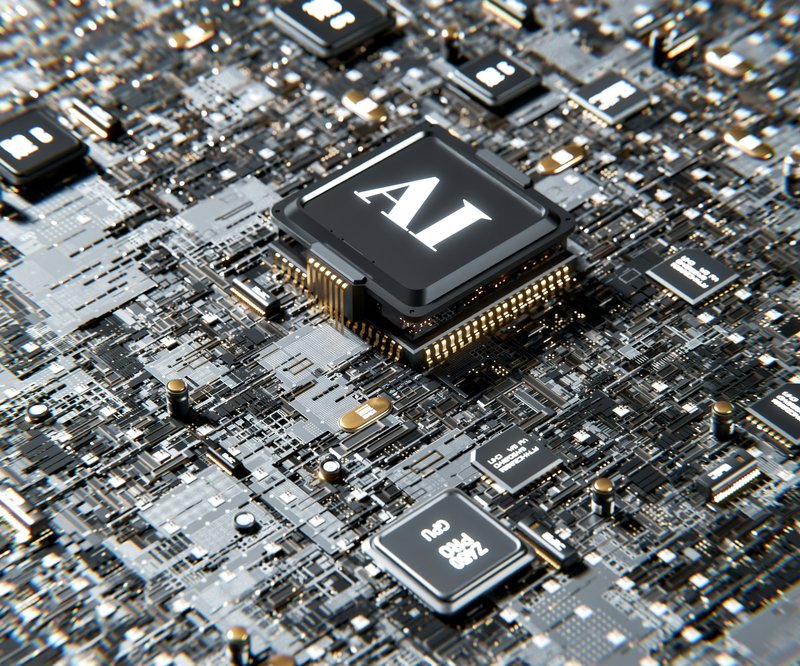A new AI model called R1, created by the Chinese startup DeepSeek, is gaining attention for its strong performance and lower cost compared to OpenAI’s AI models. While DeepSeek’s model competes with OpenAI’s o1 model, they also have some key differences.
OpenAI is investigating whether DeepSeek trained its AI by asking OpenAI’s own chatbot many questions. Despite these concerns, DeepSeek’s AI model has gained popularity, with its app becoming one of the most downloaded on iPhones in the U.S.
Let’s explore how these two AI models compare and what makes them unique.
How DeepSeek Works
DeepSeek has found ways to reduce the amount of data and computing power needed to train its AI. It has used techniques developed by other AI companies while also inventing some of its own. One of the key techniques DeepSeek uses is called “mixture of experts.” This means that instead of training one large AI model to do everything, DeepSeek splits the work between multiple smaller models, each specializing in different tasks. This approach saves time and computing resources.
According to Luke Arrigoni, CEO of AI privacy platform Loti AI, the techniques used by DeepSeek are not entirely new, but applying them on such a large scale is unique.
DeepSeek’s AI requires less power before answering a question, but once a question is asked, it uses more power to think through its response. It does this using “chain-of-thought” reasoning, which allows it to solve problems step by step. OpenAI’s o1 model also uses this method, but it does not show users how it reaches an answer. In contrast, DeepSeek’s model provides insights into its thought process, which can be used to train smaller AI models.
Both DeepSeek’s R1 and OpenAI’s o1 are capable of complex reasoning tasks, such as writing business plans or creating crossword puzzles.

Performance Comparison
DeepSeek’s researchers tested R1 against some of OpenAI’s top AI models and found that it performed at a similar level. One of the tests they used was developed by OpenAI itself, which measures how well an AI model can solve programming tasks, such as fixing bugs in software.
DeepSeek’s R1 performed as well as OpenAI’s o1 and did better than an earlier OpenAI model called o1-mini.
Members of the open-source community have also created a smaller version of R1 that can run on mobile phones and tablets. Some users find R1’s writing and problem-solving abilities impressive, but others note that it still falls short of OpenAI’s o1 in some areas.
Even OpenAI’s CEO, Sam Altman, acknowledged that R1 is an impressive model, especially considering its lower cost. He also said that having new competition motivates OpenAI to speed up its own product releases.
Cost Comparison
One of DeepSeek’s biggest advantages is cost efficiency. DeepSeek claims that R1 achieves results similar to OpenAI’s models but at a much lower cost. Some estimates suggest that DeepSeek trained one of its earlier models using only about $5 million worth of computing chips. However, this estimate does not include research and development costs.
In comparison, OpenAI spent more than $100 million training its GPT-4 model, and its upcoming GPT-5 model is expected to cost even more—possibly over $1 billion. Training GPT-5 for just six months could cost around $500 million in computing power alone.
Privacy and Security Concerns
DeepSeek’s AI has raised some concerns about privacy and censorship. Users have noticed that DeepSeek’s latest model, called V3, refuses to answer sensitive political questions about China and its leader, Xi Jinping. In some cases, the AI provides responses that align with the Chinese government’s official stance, rather than offering multiple perspectives like OpenAI’s ChatGPT.
Despite this, some users feel more comfortable using DeepSeek’s AI because it is open-source. This means they can download and run it on their own servers, keeping their data private.
On the other hand, OpenAI has strict guidelines to ensure its AI models are used safely. OpenAI has a “new safety training approach” that prevents users from bypassing security restrictions (a technique known as jailbreaking). OpenAI has also partnered with AI safety organizations in the U.S. and U.K. to improve security.
Open-Source vs. Proprietary AI Models
One of the biggest differences between DeepSeek and OpenAI is their approach to open-source technology.
DeepSeek has made the core “weights” of its R1 model publicly available, meaning developers can freely use, modify, and improve it. However, DeepSeek has not released the data it used to train the model, leading some experts to argue that it is not fully open-source.
By making its AI model partially open-source, DeepSeek allows developers to study and improve it.
OpenAI, on the other hand, keeps its models proprietary. Businesses and consumers must pay to use OpenAI’s services, and they cannot freely modify the AI. Some companies prefer proprietary AI models because they come with built-in cybersecurity protections, while others prefer open-source models because they offer more control and flexibility.

Final Thoughts
DeepSeek’s R1 model is an exciting new competitor to OpenAI’s AI models. It performs well in problem-solving tasks and uses a cost-effective approach to training. While R1 is not as powerful as OpenAI’s best models in all areas, its open-source nature makes it attractive to developers who want more control over their AI systems.
However, privacy concerns and government censorship could limit its adoption in some countries. Meanwhile, OpenAI continues to improve its AI models while maintaining strict security measures and pricing its services at a premium.
As AI technology advances, competition between companies like DeepSeek and OpenAI will drive innovation, offering users more choices and better AI tools at different price points. Whether businesses choose open-source models like R1 or proprietary solutions like OpenAI’s, the future of AI is shaping up to be more diverse and competitive than ever before.
Stay curious my friends!

